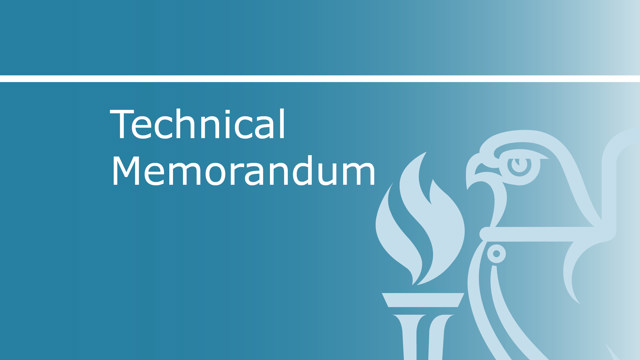
- Standard Rate
- £100.00 +VAT
- Member Rate
- FREE
Understand and reduce the embodied carbon of HVAC systems in office buildings.
CIBSE TM65.4 provides vital insights into the life cycle embodied carbon impact of heating, ventilation, and cooling (HVAC) systems typically used in UK office buildings. Developed by Introba and sponsored by CIBSE and Introba, this research helps engineers, designers, and sustainability professionals to make informed decisions that support net zero design goals.
This publication analyses embodied carbon at both product and system levels, drawing on data shared by manufacturers and calculated using the CIBSE TM65 methodology. It compares HVAC systems across two timeframes, a typical building service life (60 years) and a tenancy period (12 years), to show how design strategies influence carbon outcomes over time.
What will you learn from this guidance?
- Gain a clearer understanding of how different HVAC choices affect embodied carbon.
- Utilise results from the early design stage to inform the selection of low-carbon systems.
- Build on a consistent framework that aligns with the wider CIBSE TM65 series.
- Support net zero office design through evidence-based decisions.
The publication is a first step towards understanding the embodied carbon implications of different HVAC design strategies in an office environment. If no EPDs are available, the results of this study can be used at the early design stage, but they should not replace project-specific calculations once a design has become more detailed
Introduction
1.1 Embodied carbon and HVAC
1.2 Aim and scope of the study
1.3 HVAC scenarios
1.4 Building fabric and system sizing
2 Product Level: Key Findings
2.1 Heating and cooling generation equipment – kgCO₂e/kW
2.2 Products – kgCO₂e/kg
3 System Level
3.1 Embodied carbon study life cycle
3.2 Results for system option 1: VRF
3.3 Results for system option 2: ASHP and FCU
3.4 Results for system option 3: ASHP and chilled beams
3.5 System results over 60 years: summary
3.6 Cat A to Cat B versus directly to Cat B
3.7 System results over 12 years: summary
4 Lever Studies
4.1 Generation lever study
4.2 Heating and cooling emitters lever study
4.3 Ventilation lever study
5 Conclusions
5.1 Main conclusions
5.2 Detailed conclusions – main systems study
5.3 Detailed conclusions – key levers study
5.4 Limitations
5.5 How can this study be used
5.6 Next steps
Appendix A: Methodology
A.1 Product-level calculations – CIBSE TM65 methodology
A.2 Data collection
A.3 TM65 generic estimates for the system options
A.4 System-level calculations
Appendix B: Product Results
B.1 Product results analysis
B.2 Air handling unit (AHU)
B.3 Air-source heat pump (ASHP)
B.4 Gas boiler
B.5 Fan coil unit (FCU)
B.6 Wet radiator
B.7 Ground source heat pump (GSHP)
B.8 Passive chilled beam
B.9 Variable refrigerant flow (VRF) condensing unit
B.10 Attenuator
B.11 Expansion vessel
B.12 Air cooled chiller
B.13 Circulation pump
B.14 Variable refrigerant flow (VRF) cassette
B.15 Variable air volume (VAV) damper
B.16 Radiant panel
B.17 Only one TM65 data point collected
B.18 No TM65 data point collected
Appendix C: Systems Assumptions
C.1 Fit-out and shell and core activities
C.2 Unused service life
Appendix D: Systems Results
D.1 System options further results
Appendix E: Refrigerants Complementary Study
E.1 Refrigerants assumptions
E.2 Refrigerants alternatives
Appendix F: Whole Life Carbon Complementary Study
F.1 Whole life carbon
Appendix G: Definitions
G.1 Abbreviations
G.2 General definitions
References
Lead authors: Will Bury (Ingleton Wood)*, Louise Hamot (Introba), Ronan Pigott (Introba)
Key contributors: Hugh Dugdale (Hines)*, Clara Bagenal George (Etude)*, Yara Machnouk (Introba), Patrick Littlejohn (Introba), Zeina Krayim (Introba), David Glossop (Introba), Jack Pearce (One Click LCA)*, Miguel Lopez (WSP)*
Steering group: Dr Joe Jack Williams (Bywater Properties), Dr Julie Godefroy (Julie Godefroy Sustainability), Simon Wyatt (Cundall)
Peer reviewers: Rowan Bell-Bentley (Arup), Rob Griffiths (Atkins), Joelle Doocey (Atkins), Sarah Bousquet (Arup), Maria Benazzo (Arup), Fabrizio Varriale (RICS), Roger Hitchin (self-employed), Sebastien Loreau (UC Louvain)